#Curtiss Wright aviation
Explore tagged Tumblr posts
Text

P-40K
@ron_eisele via X
73 notes
·
View notes
Text

Curtiss H-75A-1 Hawk wears the Armée de l’Air standard three-tone scheme, with her GC 11/5 markings on her port, and the Lafeyette Escadrille Sioux Indian head motif (the TFC logo) on her starboard side.
@ron_eisele via X
#h-75 Hawk#Curtiss Wright aviation#fighter#aircraft#french air force#ww2 aviation#ww2 history#aviation photography#ww2 aircraft#ww2 photo
66 notes
·
View notes
Text
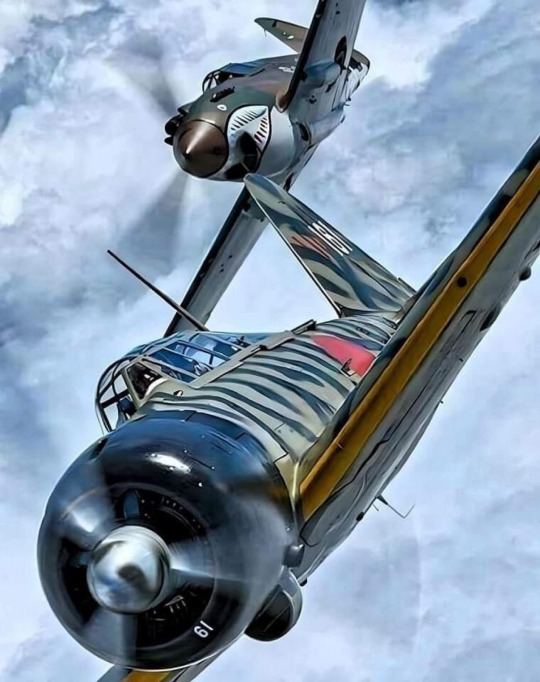
Japanese Zero chased by an American P-40 "Flying Tiger
@Sylvia70485099 🇫🇷🇺🇦via X
#a6m3 zero#imperial japanese navy#fighter#p 40 tomahawk#Curtiss wright aviation#chinese air force#ww2 history#ww2 aircraft#pacific theater#ww2#ww2 aviation#wwii aircraft#wwii planes
20 notes
·
View notes
Text
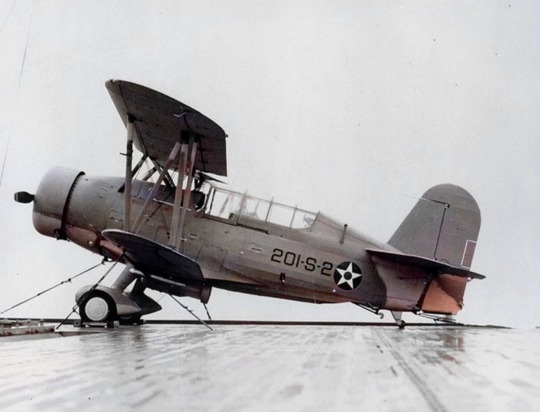
Seagull SOC-3A from VS-201 onboard the carrier USS Long Island photographed on 16 Dec. 1941
#Curtiss#SOC-3A#Seagull#scout plane#observation aircraft#Biplane#Curtiss-Wright#US Navy#vintage aviation#flight deck#airplane
152 notes
·
View notes
Text
I've met this lovely gal many times before, but still every time, she steals me 😌💕

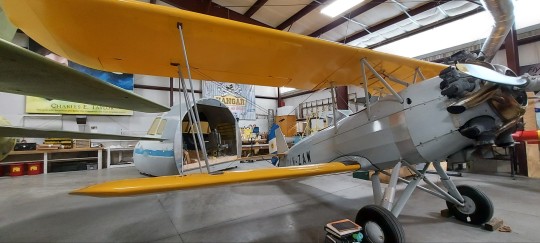
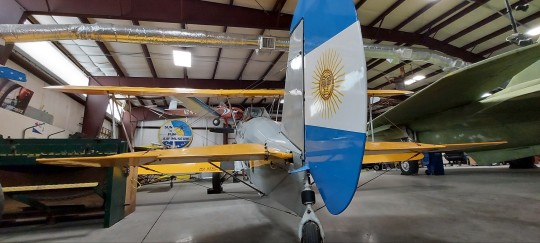

She's a Curtiss Wright 16E built in 1936! 87 years old and still airworthy! One of maybe 2 or 3 16Es still capable of flying today. Her engine is a Curtiss Wright J-6 (a very rare engine, only 500 made- and this museum has 2!)! This aircraft was intended to be a trainer for pilots training for higher performance aircraft. The infamous Boeing Stearman won that bid back in the day, which is why Stearmans are much more common than this plane. Instead it was adopted as a trainer by the militaries of Brazil, Peru, Argentina, Bolivia, and Ecuador. Im told this particular airplane was flown by famous Brazilian aviaton pioneer Alberto-Santos Dumont!
19 notes
·
View notes
Text

airsLLide No. 9175: C-GTXW, Curtiss C-46A Commando, Air Manitoba, Winnipeg, June 22, 1993.
Air Manitoba, previously also known as Northland Air Manitoba, was formed in 1986 on the AOC of Illford Riverton Airways in order to operate scheduled passenger and freight services in Northern Manitoba from its base in Winnipeg. It was co-owned by the Native Development Corporation and thus also offered its services to native communities. It ceased trading in 1994.
While Air Manitoba relied on the British built Hawker-Siddeley HS-748 (later known as BAe 748) for passenger flights, its freight business was conducted with the help of a varying fleet of vintage Curtiss C-46 Commandos. In total, seven units of the bulky military transport served with Air Manitoba over the years, with incidents and accidents occasionally taking out a fleet member and calling for a replacement.
C-GTXW nick-named «Old Lady» went to Kenya in 1994 to fly relief missions. When she returned to Canada in 1996 she was acquired by famous propliner refuge Buffalo Airways of Yellowknife, NT, where she flew-on hauling cargo until she was damaged in a gear-up landing in September 2015.
1 note
·
View note
Text
War Profiteers

Remember President Dwight “Ike” Eisenhower, who after green-lighting the overthrow of Iran’s democracy in 1953 at the behest of petrochemical corporations, had a change of heart and warned about the Military Industrial Complex? Here are the top 100 USA Military Industrial Complex “defense” contractors, all corporate welfare queens mooching off the public, who have blood on their hands in Palestine and elsewhere:
Academi
Action Target
ADT Corporation
Advanced Armament Corporation
AECOM
Aerospace Corporation
Aerovironment
AirScan
AM General
American Petroleum Institute
Argon ST
ARINC
Artis
Assett
Astronautics Corporation of America
Atec
Aurora Flight Sciences
Axon Enterprise
United Kingdom BAE Systems
BAE Systems Inc
Ball Corporation
Ball Aerospace & Technologies
Barrett Firearms Manufacturing
Battelle Memorial Institute
Bechtel
Berico Technologies
Boeing Defense, Space & Security
Booz Allen Hamilton
Boston Dynamics
Bravo Strategic
CACI
Carlyle Group
Carnegie Mellon University
Ceradyne
Cloudera
Colt Defense
The Columbia Group
Computer Sciences Corporation
Concurrent Technologies Corporation
CSRA (IT services company)
Cubic Corporation
Omega Training Group
Curtiss-Wright
DeciBel Research
Dillon Aero
Dine Development Corporation
Draper Laboratories
DRS Technologies
DynCorp
Edison Welding Institute
[Israei]l Elbit Systems
M7 Aerospace
Ensco
United Kingdom/Military contractor Ernst & Young
Evergreen International Aviation
Exxon
Fluor Corporation
Force Protection Inc
Foster-Miller
Foster Wheeler
Franklin Armoury
General Atomics
General Dynamics
Bath Iron Works
General Dynamics Electric Boat
Gulfstream
Vangent
General Electric Military Jet Engines Division
Halliburton Corporation
Health Net
Hewlett-Packard
Honeywell
Humana Inc.
Huntington Ingalls Industries
Hybricon Corporation
IBM
Insight Technology
Intelsat
International Resources Group
iRobot
ITT Exelis
Jacobs Engineering Group
JANUS Research Group
Johns Hopkins University
Kaman Aircraft
KBR
Kearfott Corporation
Knight's Armament Company
Kratos Defense & Security Solutions
L3Harris Technologies
Aerojet
Brashear
[France] Lafayette Praetorian Group
Lake Shore Systems
Leidos
EOTech
Lewis Machine & Tool Company
Lockheed Martin
Gyrocam Systems
Sikorsky
LRAD Corporation
ManTech International
Maxar Technologies
McQ
Microsoft
Mission Essential Personnel
Motorola
Natel Electronic Manufacturing Services
Navistar Defense
Nextel
Northrop Grumman
Northrop Grumman Electronic Systems
Northrop Grumman Ship Systems
Northrop Grumman Technical Services
Northrop Grumman Innovation Systems
NOVA
Oceaneering International
Olin Corporation; also see John M. Olin and John M. Olin Foundation
Oshkosh Corporation
Para-Ordnance
Perot Systems
Picatinny Arsenal
Pinnacle Armor
Precision Castparts Corporation
Raytheon Technologies
Collins Aerospace
Rockwell Collins
Goodrich Corporation
Pratt & Whitney
Raytheon Intelligence & Space
Raytheon Missiles & Defense
Raytheon BBN
Remington Arms
Rock Island Arsenal
Roundhill Group
Ruger
Saab Sensis
Science Applications International Corporation (SAIC)
SGIS
Sierra Nevada Corporation
Smith & Wesson
Smith Enterprise (SEI)
SPRATA
Springfield Armory
SRC Inc
SRI International
Stanley
Stewart & Stevenson
Swift Engineering
Tactical Air Support
Teledyne
Teledyne FLIR
Textron
AAI Corporation
Bell Helicopter Textron
Trijicon
TriWest Healthcare Alliance
Unisys
U.S. Ordnance
Verizon Communications
Vinnell Corporation
Westinghouse Electric Corporation
8 notes
·
View notes
Text
El sueño de volar
Los sueños de volar algún día se harán realidad con los vehículos aéreos eléctricos de pasajeros. Desde Ícaro desafiando al sol con alas de cera hasta los Wright elevándose sobre Kitty Hawk, la humanidad ha estado obsesionada con surcar los cielos. Ahora, disruptivas startups prometen llevar esa fantasía a nuestras ciudades con taxis aéreos autónomos. Pero mientras visionarios como Lilium y Joby Aviation buscan que despeguemos hacia los suburbios, los autos eléctricos terrestres como los de Tesla ya recorren velozmente las carreteras. ¿Podrán los vehículos voladores personales sortear obstáculos regulatorios y de infraestructura para materializar su potencial? ¿O el futuro de la movilidad eléctrica seguirá atado al asfalto? Revisemos el panorama.

Los humanos han soñado con volar desde la antigüedad. Los primeros esfuerzos se centraron en emular el vuelo de las aves con alas artificiales. En el siglo IX, Abbas Ibn Firnas construyó unas alas rudimentarias y se lanzó desde una torre, planeando brevemente. En el Renacimiento, Leonardo Da Vinci diseñó varios prototipos de máquinas voladoras. Pero no fue hasta finales del siglo XVIII que los hermanos Montgolfier inventaron el globo aerostático, demostrando por primera vez que el vuelo era posible.
A mediados del siglo XIX, Sir George Cayley sentó las bases de la aerodinámica moderna al identificar las cuatro fuerzas que actúan sobre un avión. A principios del siglo 20, los inventores comenzaron a experimentar con autos voladores y aeronaves híbridas tierra-aire. En 1903, los hermanos Wright lograron el primer vuelo propulsado y controlado en un avión más pesado que el aire. La Primera Guerra Mundial vio grandes avances en el diseño de aviones. En 1917, Glenn Curtiss desarrolló el Autoplane, considerado uno de los primeros diseños viables de un auto volador. En 1927, Charles Lindbergh cruzó el Atlántico en un vuelo transoceánico sin escalas.
En la década de 1930, Waldo Waterman creó varios prototipos exitosos de autos voladores que realizaron breves vuelos. Después, la Segunda Guerra Mundial trajo aviones a reacción y cohetes. Sin embargo, la tecnología y los materiales de la época limitaron el desarrollo en gran escala. La Segunda Guerra Mundial y la Guerra Fría desviaron los recursos e intereses hacia jets de combate y cohetes. No fue hasta la década de 1950 que nuevos intentos como el ConvAirCar Model 118 y el Aerocar Aero-Plane tuvieron algo de éxito, aunque eran complejos de operar. En 1969 el Apolo 11 aterrizó en la luna.
En la década de 1980, la Administración Federal de Aviación de EE. UU. estableció estándares de seguridad para vehículos de despegue y aterrizaje vertical. Esto renovó el interés y allanó el camino para desarrollos posteriores. Modelos notables de fines del siglo XX fueron el Avcen Jet Flying Car y el Moller Skycar M400. Sin embargo, los altos costos, la compleja logística y las limitaciones persistentes de almacenamiento de energía evitaron una adopción generalizada.

Ahora en las dos primeras décadas del siglo 21 hemos visto grandes avances en vehículos aéreos eléctricos para transporte urbano y regional. Compañías como Lilium, Joby Aviation y Archer Aviation están desarrollando taxis aéreos y vehículos de despegue y aterrizaje vertical eléctricos (eVTOLs) para viajes punto a punto más rápidos y sostenibles.
En 2006, el avión transitable PAL-V Liberty obtuvo la certificación de la Unión Europea para operar tanto en carreteras como en cielos. Otros como Terrafugia Transition están siguiendo un enfoque híbrido terra-aire. Mientras tanto, AeroMobil ha presentado prototipos de automóviles voladores de alta velocidad para 4 pasajeros.
China ha establecido una hoja de ruta ambiciosa para tener vehículos aéreos operativos masivamente en 2025. Compañías respaldadas como EHang ya tienen taxis aéreos autónomos funcionando en pruebas. Por otro lado, AirBus, Hyundai y Uber planean lanzar servicios aéreos urbanos en la próxima década. Con la electrificación, la autonomía y las asociaciones intersectoriales, es probable que veamos los vehículos voladores tripulados convertirse en una realidad común en los próximos años.
La compañía alemana Volocopter tiene el volador eléctrico Volocity, diseñado para trasladar 2 pasajeros sobre el entorno urbano sin necesidad de infraestructura adicional. Lilium, también alemana, trabaja en una aeronave eléctrica de despegue y aterrizaje vertical capaz de transportar a 4 pasajeros. En Estados Unidos, Joby Aviation construye el taxi aéreo eléctrico S4 con 4 plazas, ideal para entornos suburbanos.

Skai Alaka'i Technologies Hopkinton, Massachusetts, USA. www.skai.co
Se pronostica que este nicho alcanzará 580 mil vehículos anuales en 2040. Empresas como Alaka'i y JetPack Aviation desarrollan prototipos de jets personales compactos impulsados por hidrógeno. La visión futura es que estos vehículos puedan estar al alcance de cualquier persona interesada en experiencias de vuelo personalizadas e innovadoras.
A pesar del entusiasmo por los vehículos aéreos eléctricos de pasajeros, su adopción masiva enfrenta desafíos. Los autos eléctricos terrestres ya tienen una infraestructura establecida de carriles, estaciones de carga y cadenas de suministro. La movilidad aérea urbana, por otro lado, debe resolver complejos rompecabezas regulatorios, de espacio aéreo, ruido y seguridad antes de materializarse.
El futuro de la movilidad aérea personalizada está despegando. Con innovadores vehículos eléctricos de despegue y aterrizaje vertical que transportan de 1 a 4 pasajeros, empresas visionarias lideran una revolución silenciosa y sostenible. Libres como pájaros, pronto cruzaremos ciudades abarrotadas pilotando nuestros propios taxis aéreos. El cielo es el límite para esta nueva era dorada de aviación personal.
¡Agárrate!
Gracias por leerme y compartir
@ptorresmx

2 notes
·
View notes
Text
Crimson Skies: High Road to Revenge - DLC Aircraft Ideas
I know some people are gonna look at this and say "WTF man, Crimson Skies came out in 2003... it's not getting any new content!"
True. But there's always a possibility- however small- that the game could be re-released on modern consoles, or (God willing) get a full-blown remake. In which case, the devs could always add new planes.
The original PC game had 17 playable aircraft, most of which did not make it into the Xbox game. Only 2 planes, the Devastator and the Brigand, would ship with the game. 4 others would be added as DLC for online multiplayer only.
I picked out 7 aircraft from the original PC game that I would like to see added if Crimson Skies gets a remake, and outlined what class I think they should be, and what weapons they could have.
It'll probably never happen, but hey... I can dream. And remember, Crimson Skies: High Road to Revenge was one of the top 5 game on the OG Xbox Live, right alongside Halo 2 and Star Wars: Battlefront II. So I'd say it has a better chance of getting a remake than most.
Whittly & Douglas M210

Raven
Class: Interceptor
Primary Weapon: Six Machine Guns
Secondary Weapon: RF-Guided "Beeperless" Seeker Rockets
Secondary Ammunition: 20 Rockets
A fast and agile fighter with six machine guns and highly accurate radio-guided Seeker Rockets that track targets aggressively. Seeker Rockets function like the Halo 2 Rocket Launcher; hold down the trigger to lock on to enemies, and release to fire.
The name of the Seeker Rocket is a reference to the "Beeper-Seeker" rocket from Crimson Skies lore. Whereas the Beeper-Seeker uses a two-stage system, firing a high-velocity "Beeper" rocket that emits a radio signal, followed up with a high-explosive "Seeker" rocket that homes in on that signal, these new rockets are able to track their targets without the need for a beeper unit; hence, "Beeperless".
Grumman E-1C
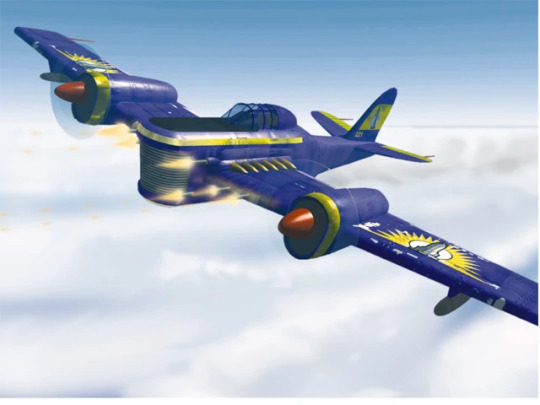
Avenger
Class: Dogfighter
Primary Weapon: Eight Machine Guns
Secondary Weapon: "Detonator III" Incendiary Rockets
Secondary Ammunition: 15 Rockets
Armed with more machine guns than any other plane in the game, along with a secondary rocket that sets enemy planes on fire for damage over time. So you get the best of the Devastator and the Bandito all in one plane.
Curtiss-Wright P2
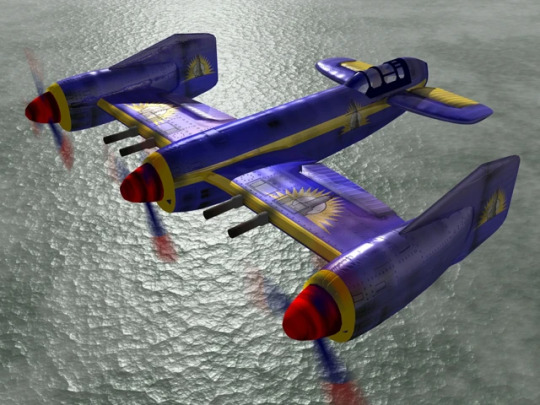
Warhawk
Class: Zep-Killer
Primary Weapon: Four "Scorpion" Cannons
Secondary Weapon: Dual Triggers
Based on Paladin Blake's customized Warhawk from the tie-in novel, this modified Warhawk is outfitted with four standard cannons that fire in pairs, just like the Dauphin and the Bulldog. However, when the Left Trigger is held, all four cannons will fire simultaneously at an increased rate of fire for massive damage.
Hughes Aviation
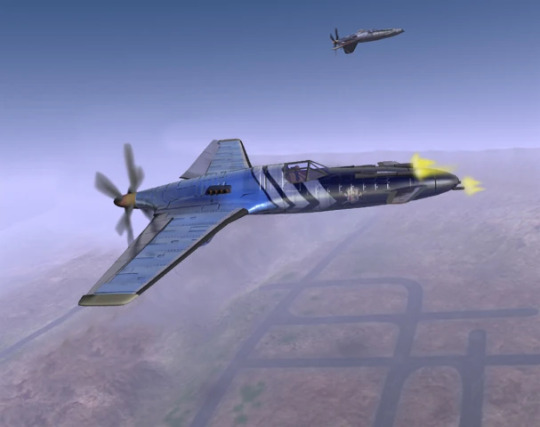
Bloodhawk
Class: Interceptor
Primary Weapon: Four Machine Guns
Secondary Weapon: XL-1 "Lancer" Laser Cannon
Secondary Ammunition: 100 Battery Charge
The standout feature of the Bloodhawk is it's secondary laser, which is extremely accurate and has unlimited ammo, but has to recharge it's battery after firing for long periods of time. Ammo starts and 100 and counts down to 0 as you fire. The longer you fire, the longer it takes to fully recharge.
McDonnell S2B
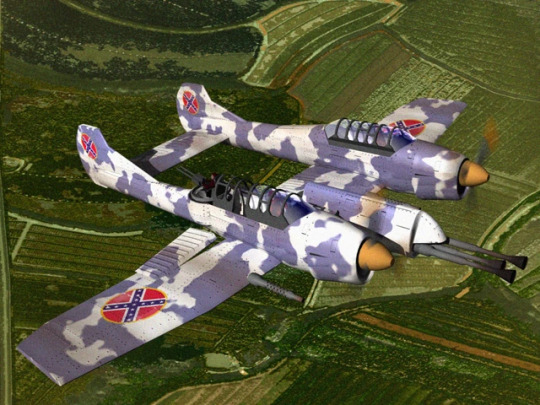
Kestrel
Class: Zep-Killer
Primary Weapon: Five Cannons
Secondary Weapon: Aerial Torpedoes
Secondary Ammunition: 15 Torpedoes
Turret: Twin Cannons
As pure a Zep-Killer as can be, the Kestrel boasts five rapid-fire cannons, as well as two more cannons in a rear turret a la the Brigand. It's secondary weapon is a rocket-propelled Aerial Torpedo that deals tremendous damage to zeppelins, but has no magnetic lock-on, making it all but useless against enemy planes.
However... if you do somehow manage to score a hit on an enemy plane with the Aerial Torpedo (whether by skill, or dumb luck) it's a 1-hit kill no matter how high your opponents armor rating.
Bell Mk. II

Valiant
Class: Zep-Killer
Primary Weapons: Six Cannons
Secondary Weapon: Grenade Launcher
Secondary Ammunition: 30 Grenades
An exceptional Zep-Killer with six cannons right out of the box, and a secondary grenade launcher. Grenades deal massive damage to zeppelins and ground targets, but are less useful against enemy planes than other Zep-Killer weapons.
Marquette PR-1
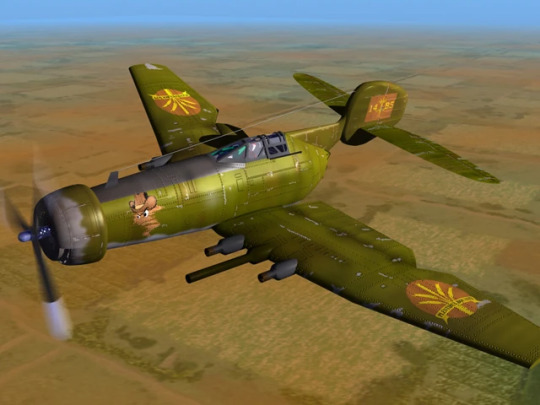
Defender
Class: Interceptor
Primary Weapons: Six Machine Guns
Secondary Weapon: "Flyswatter" Flak Rockets
Secondary Ammunition: 20 Rockets
A capable fighter in the right hands, the Defender is armed with six machine guns and Flak Rockets. Flak Rockets have the damage of the Devastator's Magnetic Missiles with the projectile speed of the Bandito's Fireball Cannon, making them highly accurate and easy to use.
#Crimson Skies#Crimson Skies: High Road to Revenge#Xbox#OG Xbox#Xbox Live#Single-Player#Multiplayer#Halo 2#Star Wars: Battlefront II#Halo#Star Wars#Fighter#Planes#DLC#Remake#Remaster#Devastator#Brigand#Fury#Firebrand#Vampire#Hellhound#Raven#Kestrel#Warhawk#Avenger#Bloodhawk#Valiant#Defender
4 notes
·
View notes
Text
While vintage aircraft are a topic at this hour, I'm wishing I had the health and the income to travel to go visit places like this. And still had the health to build balsa and tissue, rubber band power, flying models of these classics.
1 note
·
View note
Text

Helldiver 🇺🇸
@AcePilotAv via X
#sb2c Helldiver#Curtiss Wright Aviation#dive bomber#aircraft#navy#aviation#us navy#carrier aviation#ww2
73 notes
·
View notes
Text
Aircraft Avionics Market
Aircraft Avionics Market Size, Share, Trends: Honeywell International Inc. Lead
Increasing Focus on Enhancing Aircraft Safety and Efficiency
Market Overview:
The global Aircraft Avionics market is projected to grow from USD 68.5 billion in 2024 to USD 99.7 billion by 2031, at a CAGR of 6.4% during the forecast period. North America is expected to dominate the market through 2031. This growth is primarily driven by increasing aircraft orders, modernization of existing aircraft fleets, and technological advancements in avionics systems. Despite the downturn in 2020 due to the COVID-19 pandemic's impact on the aviation industry, the market is now showing strong recovery signs, signaling robust future growth.
DOWNLOAD FREE SAMPLE
Market Trends:
A major trend in the Aircraft Avionics market is the rising demand for in-flight connectivity and entertainment services. Airlines are increasingly equipping their aircraft with advanced avionics systems to provide Wi-Fi, live TV, and personalized entertainment options, significantly enhancing the passenger experience. This growing demand for high-speed internet and continuous connectivity during flights is driving the adoption of satellite communication systems and data networks. Recent surveys indicate that more than 80% of passengers consider in-flight Wi-Fi an essential service, pushing airlines to invest in state-of-the-art avionics solutions.
Market Segmentation:
The commercial aviation segment is predicted to dominate the Aircraft Avionics market during the forecast period. This segment's growth is driven by rising air travel demand, extensive airline fleet expansion plans, and the need for advanced avionics to improve fuel efficiency and passenger comfort. For instance, in January 2024, Airbus received an order from Air India for 250 A320neo family aircraft, demonstrating the strong demand within the commercial aviation sector.
Market Key Players:
The Aircraft Avionics market is highly competitive, with several large firms vying for market share. Leading companies include Honeywell International Inc., Thales Group, Garmin Ltd., Collins Aerospace (Raytheon Technologies), BAE Systems plc, GE Aviation, Universal Avionics Systems Corporation, Curtiss-Wright Corporation, L3Harris Technologies, Inc., and Safran SA. These companies focus on product innovation, strategic partnerships, and acquisitions to enhance their market positions. For example, Honeywell introduced its next-generation Flight Management System in 2023, aimed at improving navigation and fuel efficiency, while Thales Group secured significant contracts, such as a major avionics suite supply deal with Airbus in 2024.
Contact Us:
Name: Hari Krishna
Email us: [email protected]
Website: https://aurorawaveintellects.com/
0 notes
Text

John Charles Robinson (November 26, 1903 – March 27, 1954) nicknamed the Brown Condor, was an aviator who fought with the Imperial Ethiopian Air Force against Benito Mussolini and Fascist Italy during the Second Italian-Ethiopian War. He is known as the Father of the Tuskegee Airmen for his contributions to the aviation programs he began.
Born in Carrabelle, Florida, he and his family moved to Gulfport, Mississippi, where he spent most of his childhood. He studied mechanical science at the Tuskegee Institute. After graduating, he attended the Curtiss-Wright School of Aviation in Chicago, where he worked as a janitor until faculty assisted him in becoming the school’s first Black student.
In early 1935, he announced that he would help in the war efforts against the Fascist Italian forces. He noted that Ethiopia was the only African nation to have successfully resisted colonial conquest by European imperial forces in the late nineteenth century. He argued, the Italian invasion posed a threat to more than just Ethiopia, but the greater idea of independence in Africa.
He conducted crucial pilot training near Addis Ababa. He was named commander of the Ethiopian Air Force. He commanded a fleet of about twenty Potez 25 biplanes which were weaponless and used for reconnaissance and supply. He escaped and returned to the US.
He and a group of other aspiring African American pilots formed the Challenger Air Pilots Association. These men attended the Curtiss-Wright School of Aviation. Fellow pilot Cornelius Coffey helped open the John Robinson School of Aviation. He urged the Tuskegee Institute to open a school of flight.
The Tuskegee Airmen accredited him as one of the founders of their program and an inspiration to all aspiring African American aviators of that era. His trailblazing contributions to African Americans in the military paved the way for the integration of the Air Force. #africanhistory365 #africanexcellence
0 notes
Text

1931 Travel Air taking off from RAF Keevil during the Great Vintage Flying Weekend
#Curtiss-Wright#Travel Air#CW-12#vintage aircraft#Biplane#sport aircraft#trainer aircraft#planes#airplanes#aviation
22 notes
·
View notes
Text
Japan Aircraft Arresting System Market with Business Prospects of Competitors | Forecast 2022 -(2024-2032)

The aircraft arresting system market in Japan is set to experience substantial growth from 2024 to 2032, propelled by advancements in aviation technology and increased defense spending. This report explores the business prospects of competitors in the market and provides a comprehensive forecast.
Competitor Business Prospects: In Japan, key competitors such as BAE Systems, Raytheon Technologies Corporation, and Curtiss-Wright Corporation are actively engaged in expanding their market presence through technological innovation and strategic collaborations. These companies are focusing on enhancing the reliability and efficiency of aircraft arresting systems to meet stringent operational requirements.
Market Dynamics: The Japanese market is characterized by a robust demand for advanced aircraft arresting systems, driven by the modernization of military and civil aviation infrastructure. The government's emphasis on bolstering national defense capabilities and improving emergency response readiness further stimulates market growth. Moreover, collaborations with international partners contribute to the transfer of cutting-edge technologies, reinforcing Japan's position in the global aerospace industry.
Request Free Sample Report - Receive a free sample report to preview the valuable insights and data we offer.
Forecast (2024-2032): Looking ahead, the Japan aircraft arresting system market is poised for significant expansion. Factors such as the procurement of next-generation fighter aircraft and the integration of advanced technologies into naval vessels will underpin market growth. Additionally, initiatives aimed at enhancing aviation safety and operational efficiency will drive the adoption of innovative aircraft arresting systems across various sectors.
In summary, the outlook for the Japan aircraft arresting system market is optimistic, with ample opportunities for competitors to capitalize on emerging trends and technological advancements. By focusing on product innovation and strategic alliances, stakeholders can navigate the evolving landscape and position themselves for sustained growth in the coming years.
About US
At Market Research Future (MRFR), we enable our customers to unravel the complexity of various industries through our Cooked Research Report (CRR), Half-Cooked Research Reports (HCRR), Raw Research Reports (3R), Continuous-Feed Research (CFR), and Market Research & Consulting Services. MRFR team have supreme objective to provide the optimum quality market research and intelligence services to our clients. Our market research studies by products, services, technologies, applications, end users, and market players for global, regional, and country level market segments, enable our clients to see more, know more, and do more, which help to answer all their most important questions. To stay updated with technology and work process of the industry, MRFR often plans & conducts meet with the industry experts and industrial visits for its research analyst members.
Contact us:
Market Research Future (part of Wants tats Research and Media Private Limited),
99 Hudson Street,5Th Floor, New York, New York 10013, United States of America
Sales: +1 628 258 0071 (US) +44 2035 002 764 (UK)
Email: [email protected]
0 notes
Text
Aviation Actuator Systems Market Analysis 2023 Dynamics, Players, Type, Applications, Trends, Regional Segmented, Outlook & Forecast till 2033
The competitive analysis of the Aviation Actuator Systems Market offers a comprehensive examination of key market players. It encompasses detailed company profiles, insights into revenue distribution, innovations within their product portfolios, regional market presence, strategic development plans, pricing strategies, identified target markets, and immediate future initiatives of industry leaders. This section serves as a valuable resource for readers to understand the driving forces behind competition and what strategies can set them apart in capturing new target markets.
Market projections and forecasts are underpinned by extensive primary research, further validated through precise secondary research specific to the Aviation Actuator Systems Market. Our research analysts have dedicated substantial time and effort to curate essential industry insights from key industry participants, including Original Equipment Manufacturers (OEMs), top-tier suppliers, distributors, and relevant government entities.
Aviation Actuator Systems Market Benefits
Aviation Actuator Systems research reports provide critical insights for strategic decision-making. They help businesses understand market trends, customer preferences, and competitive landscapes. By analyzing data on market size, growth potential, and consumer behavior, companies can identify new opportunities and mitigate risks. These reports also guide product development, pricing strategies, and marketing campaigns, ensuring alignment with current market demands. Furthermore, market research reports enhance forecasting accuracy and help in benchmarking performance against competitors. Ultimately, they inform investment decisions, optimize resource allocation, and foster innovation, contributing to sustained business growth and a competitive edge.
Key Report Highlights:
Key Market Participants: The report delves into the major stakeholders in the market, encompassing market players, suppliers of raw materials and equipment, end-users, traders, distributors, and more.
Comprehensive Company Profiles: Detailed company profiles are provided, offering insights into various aspects including production capacity, pricing, revenue, costs, gross margin, sales volume, sales revenue, consumption patterns, growth rates, import-export dynamics, supply chains, future strategic plans, and technological advancements. This comprehensive analysis draws from a dataset spanning 12 years and includes forecasts.
Market Growth Drivers: The report extensively examines the factors contributing to market growth, with a specific focus on elucidating the diverse categories of end-users within the market.
Data Segmentation: The data and information are presented in a structured manner, allowing for easy access by market player, geographical region, product type, application, and more. Furthermore, the report can be tailored to accommodate specific research requirements.
SWOT Analysis: A SWOT analysis of the market is included, offering an insightful evaluation of its Strengths, Weaknesses, Opportunities, and Threats.
Expert Insights: Concluding the report, it features insights and opinions from industry experts, providing valuable perspectives on the market landscape.
Receive the FREE Sample Report of Aviation Actuator Systems Market Research Insights @ https://stringentdatalytics.com/sample-request/aviation-actuator-systems-market/12265/
Market Segmentations:
Global Aviation Actuator Systems Market: By Company • Sitec Aerospace • Rockwell Collins • Honeywell • Eaton • Moog • SAAB • Parker • Woodward • UTC • Curtiss Wright • Beaver • Merrill • GE Aviation • Arkwin • Electromech Technologies Global Aviation Actuator Systems Market: By Type • Electric • Electromechanical • Electrohydraulic • Electrohydrostatic Global Aviation Actuator Systems Market: By Application • Commercial Market • Military Market
Regional Analysis of Global Aviation Actuator Systems Market
All the regional segmentation has been studied based on recent and future trends, and the market is forecasted throughout the prediction period. The countries covered in the regional analysis of the Global Aviation Actuator Systems market report are U.S., Canada, and Mexico in North America, Germany, France, U.K., Russia, Italy, Spain, Turkey, Netherlands, Switzerland, Belgium, and Rest of Europe in Europe, Singapore, Malaysia, Australia, Thailand, Indonesia, Philippines, China, Japan, India, South Korea, Rest of Asia-Pacific (APAC) in the Asia-Pacific (APAC), Saudi Arabia, U.A.E, South Africa, Egypt, Israel, Rest of Middle East and Africa (MEA) as a part of Middle East and Africa (MEA), and Argentina, Brazil, and Rest of South America as part of South America.
Click to Purchase Aviation Actuator Systems Market Research Report @ https://stringentdatalytics.com/purchase/aviation-actuator-systems-market/12265/
Report includes Competitor's Landscape:
➊ Major trends and growth projections by region and country ➋ Key winning strategies followed by the competitors ➌ Who are the key competitors in this industry? ➍ What shall be the potential of this industry over the forecast tenure? ➎ What are the factors propelling the demand for the Aviation Actuator Systems? ➏ What are the opportunities that shall aid in significant proliferation of the market growth? ➐ What are the regional and country wise regulations that shall either hamper or boost the demand for Aviation Actuator Systems? ➑ How has the covid-19 impacted the growth of the market? ➒ Has the supply chain disruption caused changes in the entire value chain?
Why to Purchase Aviation Actuator Systems Market Report?
Purchasing a market research report provides valuable, reliable insights that are often beyond a company's in-house capabilities. These reports deliver comprehensive data on market trends, customer behaviors, competitive analysis, and industry forecasts, saving time and resources on extensive data collection and analysis. They offer expert perspectives and methodologies, ensuring credible, up-to-date information. By accessing tailored, actionable intelligence, businesses can make informed decisions, reduce uncertainty, and identify opportunities for growth. Additionally, these reports enhance strategic planning, risk management, and competitive positioning, making them a crucial investment for companies seeking to stay ahead in their industry and drive innovation. Customization of the Report:
This report can be customized to meet the client’s requirements. Please connect with our sales team ([email protected] ), who will ensure that you get a report that suits your needs. You can also get in touch with our executives on +1 346 666 6655 to share your research requirements.
About Stringent Datalytics
Stringent Datalytics offers both custom and syndicated market research reports. Custom market research reports are tailored to a specific client's needs and requirements. These reports provide unique insights into a particular industry or market segment and can help businesses make informed decisions about their strategies and operations.
Syndicated market research reports, on the other hand, are pre-existing reports that are available for purchase by multiple clients. These reports are often produced on a regular basis, such as annually or quarterly, and cover a broad range of industries and market segments. Syndicated reports provide clients with insights into industry trends, market sizes, and competitive landscapes. By offering both custom and syndicated reports, Stringent Datalytics can provide clients with a range of market research solutions that can be customized to their specific needs.
Reach US
Stringent Datalytics
+1 346 666 6655
Social Channels:
Linkedin | Facebook | Twitter | YouTube
0 notes